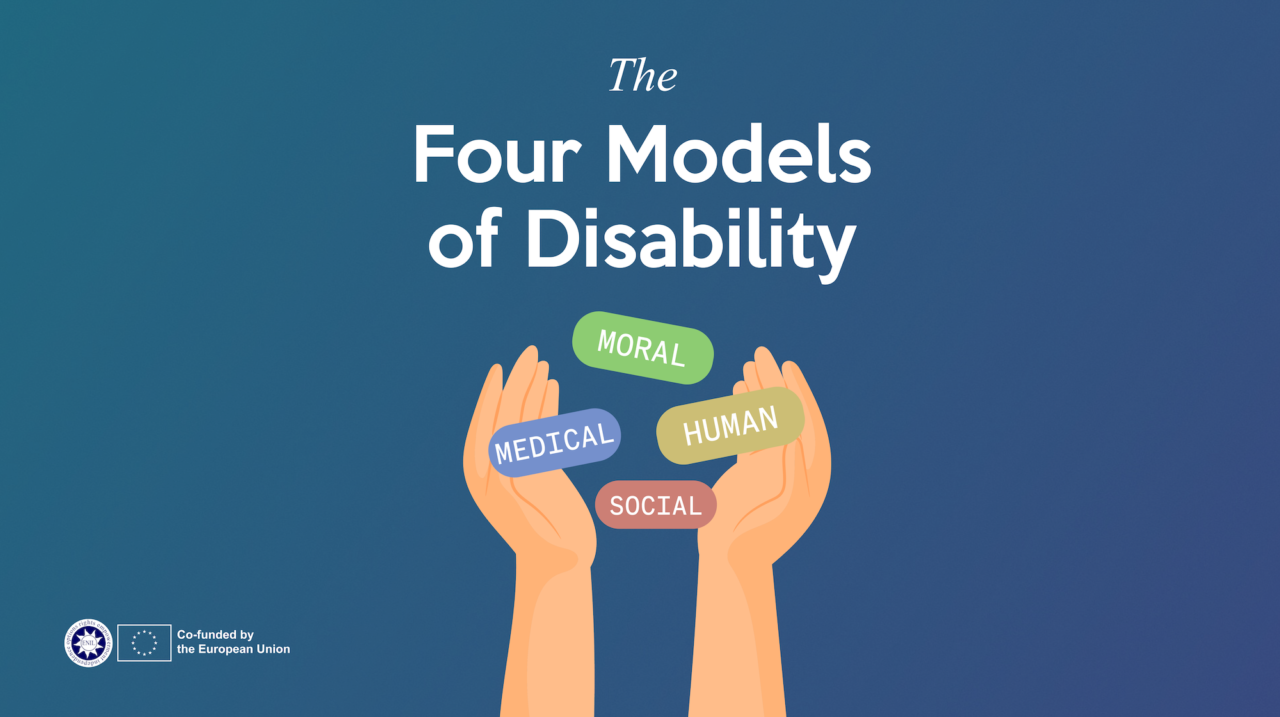By Christos Meletis – ENIL, Volunteer
How do institutions and societies perceive people with bodily impairments? Why don’t people with impairments participate equally in society? What is disability?
If you asked these questions at different times and in different places throughout history, you would get completely different answers. Disability is, on one hand, a complex and natural part of the human condition, and on the other, something deeply shaped by its social and historical context.
So, what is a model? A model is a simplification of a phenomenon that helps communicate an idea more clearly. In the case of disability, models usually address four key questions:
- What is impairment?
- What is disability?
- Who is responsible for the effects of disability?
- How can these effects be addressed?
Let’s begin. There are many models of disability, each reflecting the values and assumptions of the time in which it developed. In this article, I will present the most influential models as a timeline.
1. Moral Model of Disability (Before 1760)
According to the moral model, disability and impairment are seen as one and the same, with the focus placed on the individual. The cause of disability, in this model, is attributed to the behavior of the person—disability is viewed as a divine punishment for moral wrongdoing. The impairment acts as a “mark” that signals the person’s supposed guilt, and the only solution is for the individual to seek redemption through spiritual or religious means.
In rarer cases, impairment might be seen as a divine blessing, and disabled individuals may be treated as holy or spiritually significant. This model is heavily influenced by religious and cultural beliefs.
The moral model is also connected to the psychological concept known as the “just-world hypothesis”—the belief that the world is fundamentally fair, where people get what they deserve. While this belief may offer people a sense of security, it also leads to harmful assumptions: that good things happen to good people, and bad things happen to those who deserve them.
2. Medical Model of Disability (1760-1990)
With the rise of industrialization, capitalism, and standardized production—which required a uniform, efficient workforce—the medical model of disability emerged. Like the moral model, it does not clearly distinguish between impairment and disability and continues to focus on the individual.
However, in this model, the problem is not moral behavior, but the impairment itself. The individual is seen as flawed or broken, and the solution is to cure, fix, or rehabilitate the body or mind to fit societal norms.
If a person cannot be “cured,” they are often excluded from society, placed in institutions, or otherwise marginalized—so as not to disrupt the industrial system built around a narrow ideal of physical and cognitive ability.
3. Social Model of Disability (1990s)
The social model of disability emerged in the 1970s and was formalized in the 1990s by disabled activist Mike Oliver. It was a powerful response to the medical model and the structural oppression faced by disabled people.
For the first time, this model made a clear distinction:
- Impairment refers to the physical or mental condition itself.
- Disability refers to the social, environmental, and attitudinal barriers that restrict people’s participation.
According to the social model, it is not the impairment that disables people, but rather the barriers put in place by society. If those barriers were removed—if spaces were accessible, attitudes inclusive, and systems designed for diversity—then disabled people could participate equally, and “disability” as a form of exclusion would no longer exist.
This model shifts the focus from “fixing” individuals to transforming society.
4. Human Rights Model of Disability (2006)
The human rights model of disability was developed in connection with the United Nations Convention on the Rights of Persons with Disabilities (UNCRPD), adopted in 2006. Influenced by the social model, it serves as a practical and legal framework for disability inclusion worldwide.
In this model, disability is understood as restricted participation in society that arises when a person with an impairment interacts with discriminatory beliefs, inaccessible environments, and non-inclusive systems.
The goal of the human rights model is to promote the emancipation, dignity, and equality of disabled people. It affirms that disability is a human rights issue, not a personal tragedy.
We now live in a time when, thanks to the relentless efforts of the disability rights movement, disabled people have tools—through the social and human rights models—to advocate for a world where we are no longer viewed as cursed, hidden from public life, or institutionalized to preserve the illusion of a society based on “ideal” normalcy.
It’s extremely important for people to understand past approaches to disability in order to avoid repeating the same mistakes—and to understand present models so that they know their rights and are empowered to fight for them. Finally, I want to emphasize that even though there have been great achievements in the emancipation of disabled people, we still live in an ableist world where outdated models and attitudes continue to persist. We must remain proactive to ensure we do not backslide



